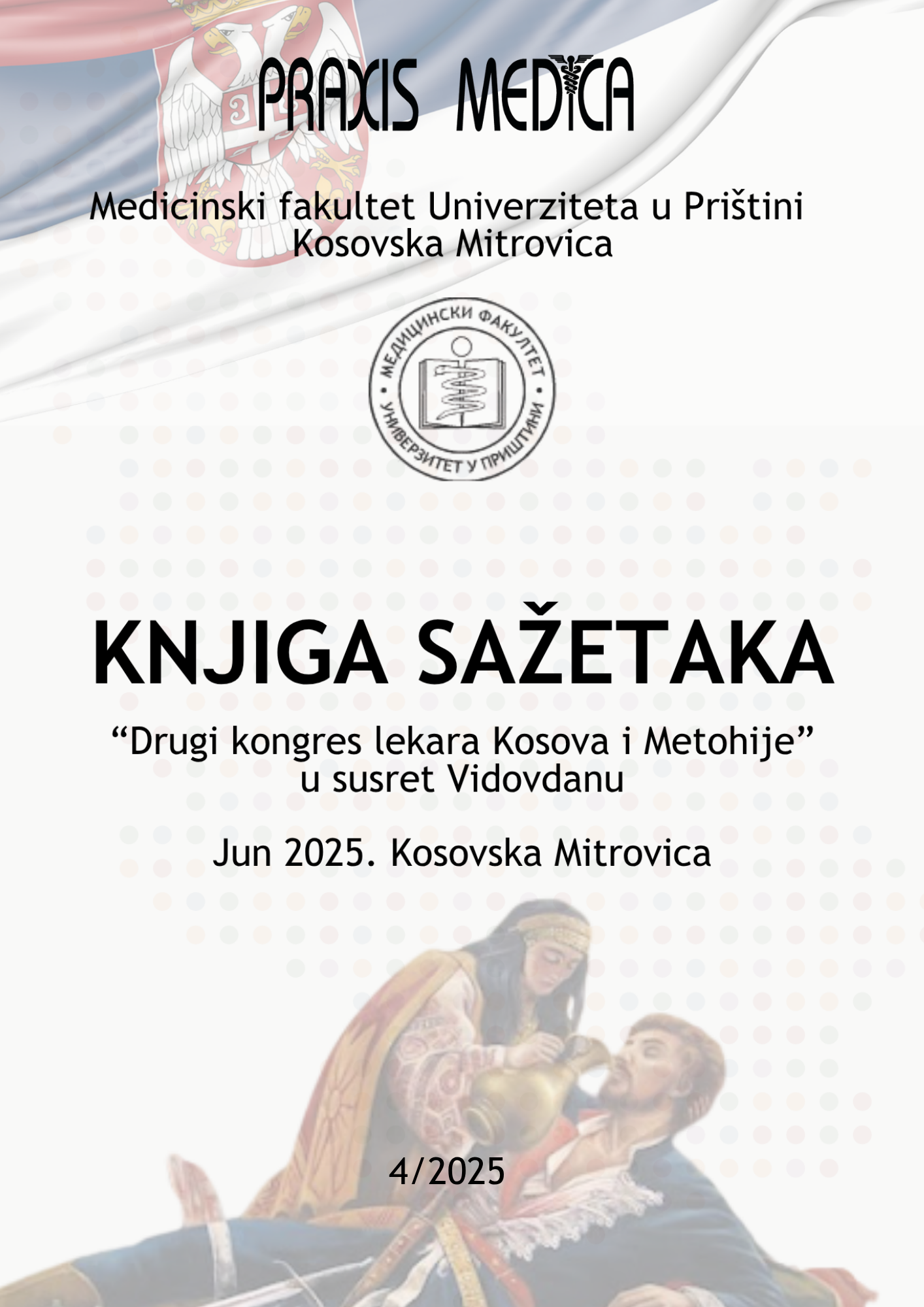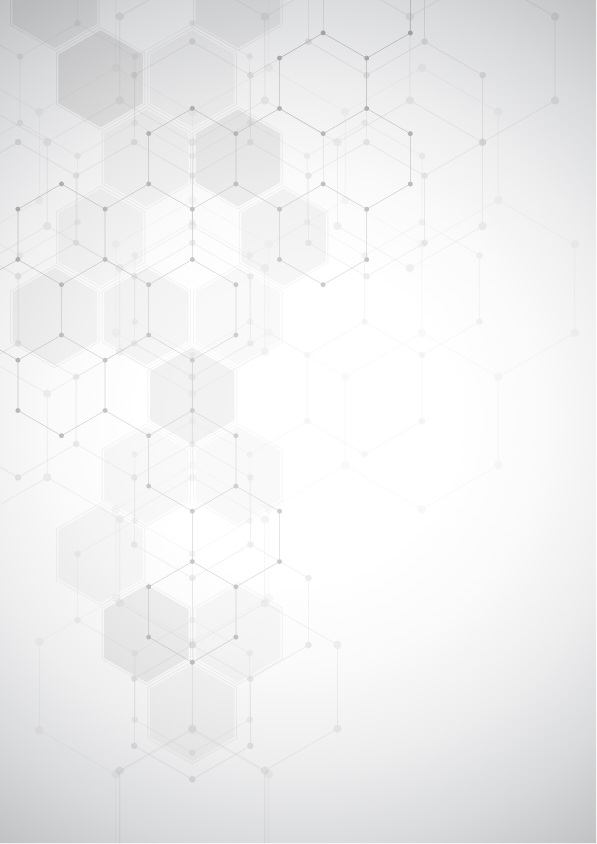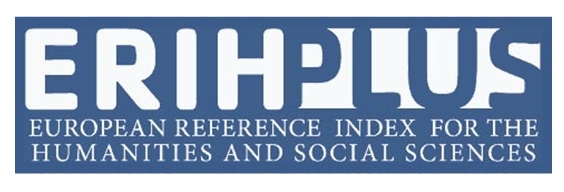
More articles from Volume 53, Issue 1, 2025
FUNKCIONALNO PRIMARNI PUTEVI NERVNOG SISTEMA: ANATOMIJA I KLINIČKE KORELACIJE
PRAĆENJE LIPIDNOG STATUSA I MARKERA INFLAMACIJE U SERUMU GOJAZNIH I ISPITANIKA SA METABOLIČKIM SINDROMOM
EFEKAT PELOIDA IZ IGALA (CRNA GORA) NA BIOMARKERE INFLAMACIJE KOD PACIJENATA OBOLJELIH OD REUMATOIDNIM ARTRITISA I PACIJENATA SA PRELEŽANIM AKUTNIM INFARKTOM MIOKARDA
MEŠANA REALNOST I VIRTUELNA REALNOST U MEDICINSKOJ EDUKACIJI
UTICAJ ŽIVOTNE SREDINE NA ZDRAVLJE – MOLEKULARNI MEHANIZMI I BOLESTI
TELOCITI DVE DECENIJE NAKON OTKRIĆA: POREKLO, IMUNOHISTOHEMIJSKI BIOMARKERI, DISTRIBUCIJA I FUNKCIJA U ZDRAVLJU I BOLESTI
Published: 30.06.2025.
Volume 53, Issue 1 (2025)
pp. 30-30;
Abstract
Introduction: Telocytes (TCs) represent a novel type of interstitial cell discovered in 2005 by Romanian scientist Laurentiu Popescu, and they are the
only known human cells identified in the 21st century. Initially classified as interstitial Cajal-like cells, they were renamed telocytes in 2010.
Main Body: Their defining morphological feature is the presence of extremely long and slender extensions called telopodes, which can reach lengths
of several hundred micrometers and exhibit an uneven, moniliform appearance that distinguishes them from other cell types. Identification of TCs
relies on a combination of immunohistochemical techniques and transmission electron microscopy (TEM), which remains the gold standard. Commonly
used immunohistochemical markers include combinations such as CD34/vimentin, CD34/PDGFRα, and CD34/c-kit.
Telocytes exhibit variable cell body shapes (pyriform, spindle-shaped, or triangular) depending on the number of telopodes (usually 1–5 per cell).
Their cytoplasm is sparse, with a prominent nucleus occupying about 25% of the cell volume, and contains mitochondria, a small Golgi complex, rough
and smooth endoplasmic reticulum, and cytoskeletal components. Originally identified in the intestinal tract, TCs have since been found in almost all
human organs – including the heart, blood vessels, lungs, skin, salivary glands, liver, gallbladder, pancreas, kidneys, urinary bladder, myometrium,
prostate, and others. They reside in the interstitial tissue, where they interact with stromal and immune cells as well as blood vessels, suggesting a
crucial role in maintaining tissue microenvironment homeostasis.
Functionally, TCs are involved in tissue regeneration, mechanical support, and immune modulation. They also contribute to stem cell niche
maintenance and signal transduction, both through direct cell–cell contacts and via paracrine signaling mediated by extracellular vesicles. Alterations
in telocytes have been reported in various inflammatory and fibrotic diseases, including ulcerative colitis, Crohn’s disease, hepatic fibrosis, psoriasis,
and systemic sclerosis. These structural and functional changes are collectively referred to as “telocytopathies.” The potential role of TCs in
tumorigenesis has led to the proposal of the term “telocytoma” for tumors of possible telocyte origin. Gastrointestinal and extra-gastrointestinal
stromal tumors, as well as tumors of the uterus, prostate, and vagina, share expression of TC markers such as PDGFRα and c-kit.
Conclusion: Despite increased research activity in the years following their discovery, numerous questions remain unanswered – including whether
telocytes constitute a homogeneous or heterogeneous cell population, which specific markers define TCs in different organs, and what their precise
roles are in neoplastic and non-neoplastic conditions. A deeper understanding of TC biology could pave the way for novel diagnostic and therapeutic
strategies in a variety of pathological conditions.
Keywords: telocytes, telopodes, interstitial cell, telocytopathies
Keywords
Citation
Copyright

This work is licensed under a Creative Commons Attribution-NonCommercial-ShareAlike 4.0 International License.
Article metrics
The statements, opinions and data contained in the journal are solely those of the individual authors and contributors and not of the publisher and the editor(s). We stay neutral with regard to jurisdictional claims in published maps and institutional affiliations.






